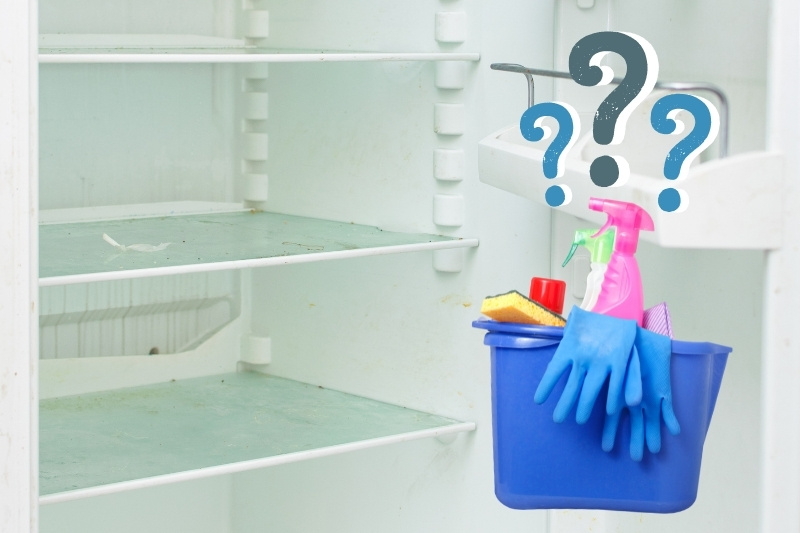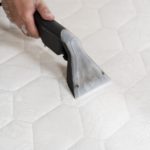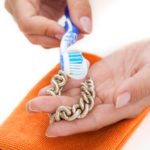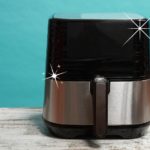A fridge is one of the main appliances in a kitchen, and given that its job is to keep food chilled and fresher for longer, the appliance needs to be clean and safe itself.
The easiest way to maintain and to keep a fridge hygienic is to clean it. But what should you clean a fridge with?
Interestingly, when it comes to cleaning a fridge, you don’t need to use lots of chemicals. All you need is a bit of soap and warm water!
When it comes to cleaning a fridge, the fewer chemicals you use, the better.
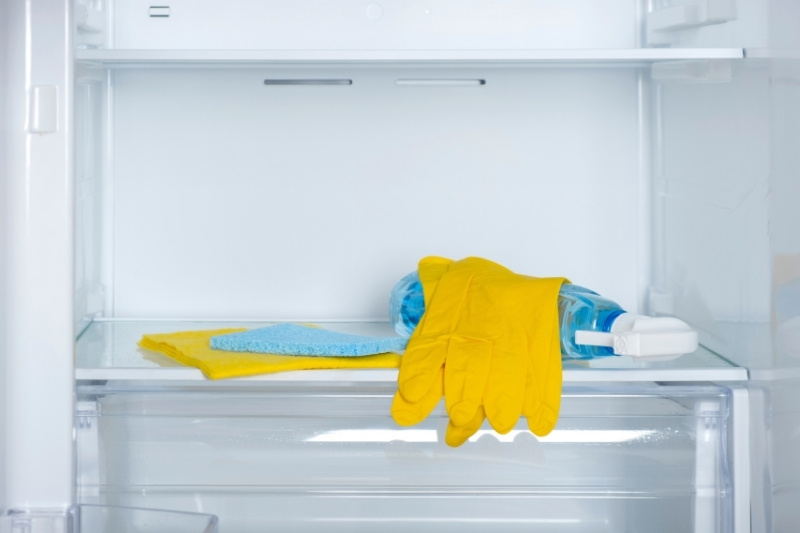
Most fridges, unless stipulated in the user guidebook, can be cleaned by using items that you’ve already got at home.
The following items can be used to clean a fridge.
While the items below are used to wash fridges, you don’t have to use every single item listed.
You’ll likely find that using a handful of them will do the trick, and you may swap and change out some items listed as your cleaning routine develops.
1. Washing Up Liquid
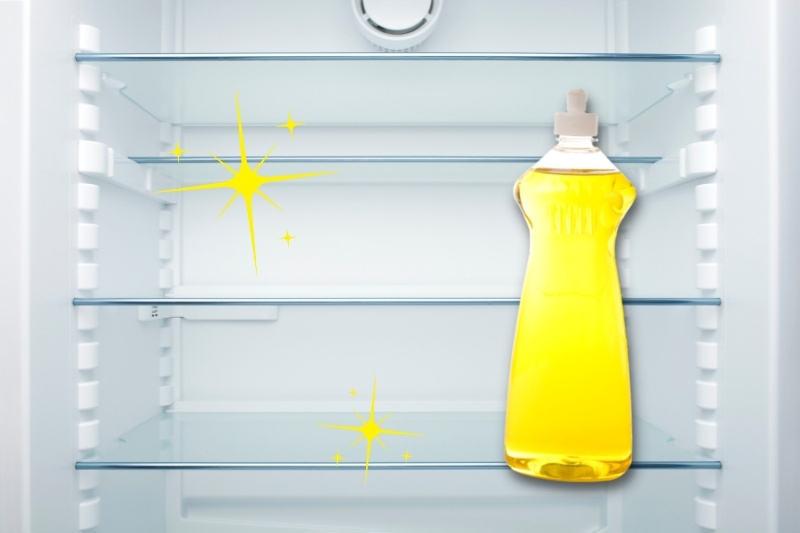
Washing up liquid can be used to clean the shelves, drawers and any other removable parts within your fridge.
Similarly, you can use a cloth soaked in warm soapy water to clean the inside of the fridge when it is empty.
Simply add a few drops of washing up liquid to some warm water in the sink, and clean the parts using a soft cloth in the sink.
Or fill a tub with warm water and washing up liquid instead, dip a cloth in the water and use the mixture to clean the interior of the fridge.
Some removable parts, like the drawers, can be caked in toughened dirt, so just allow these items to sit submerged in soapy water for a period of time before you clean them.
The water plus the soap should break down the grime that’s stuck.
2. Warm Water

Warm water can be added to a number of items on this list and can be used to aid the cleaning process. For example, you can add warm water to washing up liquid, vinegar or bleach (don’t mix vinegar with bleach though).
Adding warm water to such items dilutes them, and makes them easier to handle and safer to use.
Just keep in mind that you do not need to oversaturate your fridge in water, simply dip a cloth in the warm water, wring it out and wipe the surfaces down.
Remember to wipe the surfaces you’ve cleaned with a dry cloth to absorb excess moisture.
3. Antibacterial Sprays and Wipes
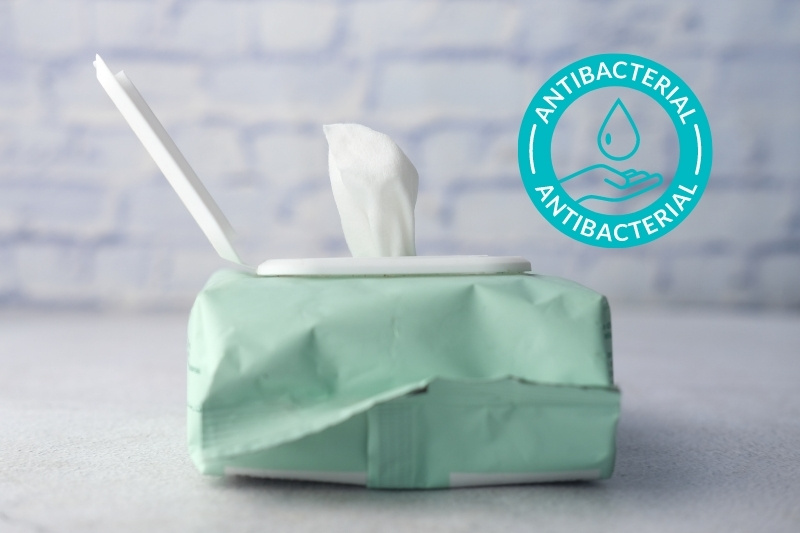
Antibacterial sprays and wipes can be used to sanitise the interior and exterior of a fridge.
They can be particularly helpful when cleaning the fridge’s door handle as this is where a lot of bacteria gathers.
4. Bicarbonate of Soda (Baking Soda)
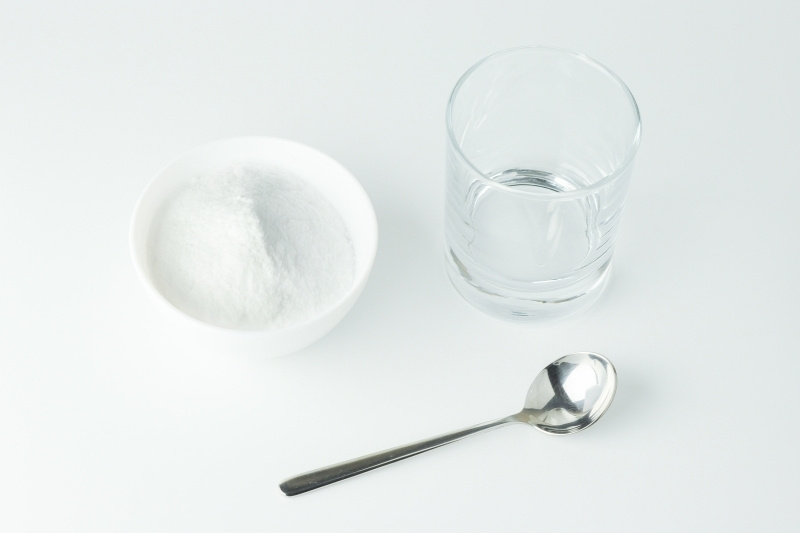
If you mix bicarbonate of soda (baking soda) with water, you can create a paste. This paste can then be spread across toughened grime and stains in a fridge.
The abrasive nature of the bicarbonate of soda will help to break down and neutralise the mess so it can be removed with ease. It should also draw out any unsightly stains from the surfaces.
5. White Vinegar
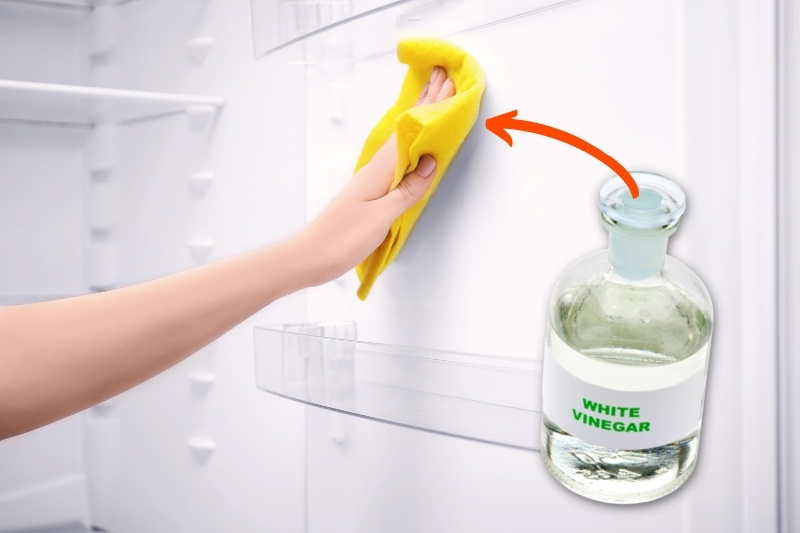
White vinegar is an acidic, and can be used to break down aged dirt, grease and general grime inside fridges.
To use vinegar to clean the interior of your fridge, mix one part white vinegar with three parts warm water in a spray bottle.
You can then spray the mixture onto the surfaces inside the empty fridge and wipe them down with a clean cloth. You may need to pay close attention to more grotty spots.
Of course, vinegar does leave quite a stench, so to neutralise the smell you could leave a few chopped up lemons in the fridge to mask the odour.
6. Soft Cloths
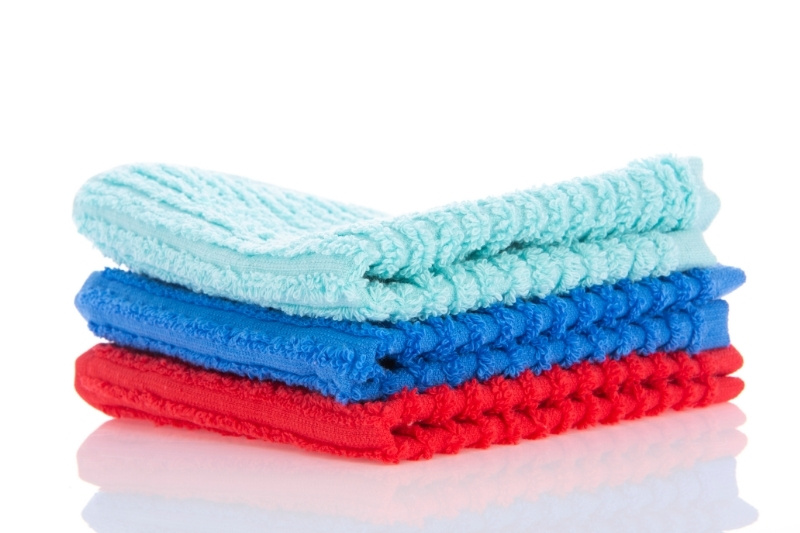
When cleaning a fridge it’s important that you stick to using softer cloths rather than abrasive items like scourers, which will damage the inside and outside of the fridge.
Cotton cloths are a good choice. In some cases you might need to use tougher tools, but these are generally only used to tease out toughened dirt from extra narrow gaps in a fridge—more on this below.
7. Bleach
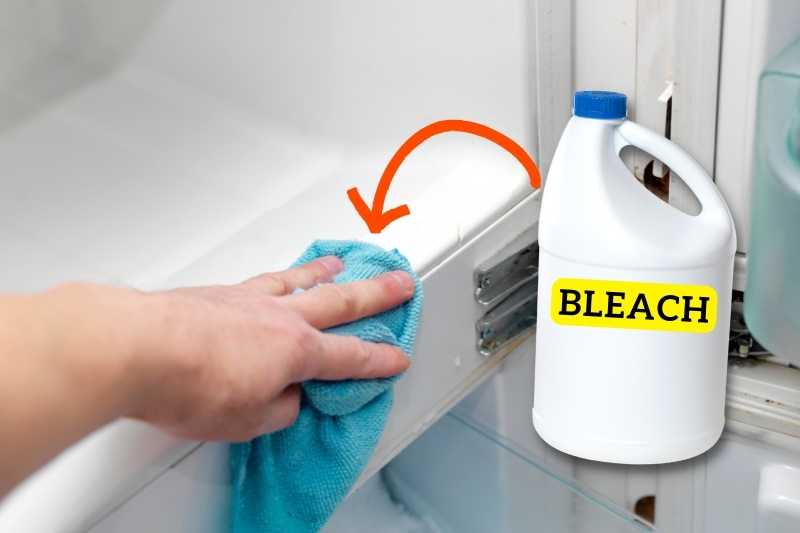
It’s not essential to use bleach to clean a fridge, and in a lot of cases you can skip it entirely.
However, if you want to make sure your fridge is extra hygienic, all you need to do is mix a tablespoon of bleach in a gallon (4.5 litres) of water, to make sure the bleach is diluted properly.
Then, dip a cloth into the water, wring it out and wipe the surfaces inside the fridge down.
Always make sure you’re wearing rubber gloves when handling bleach.
8. Spray Bottle
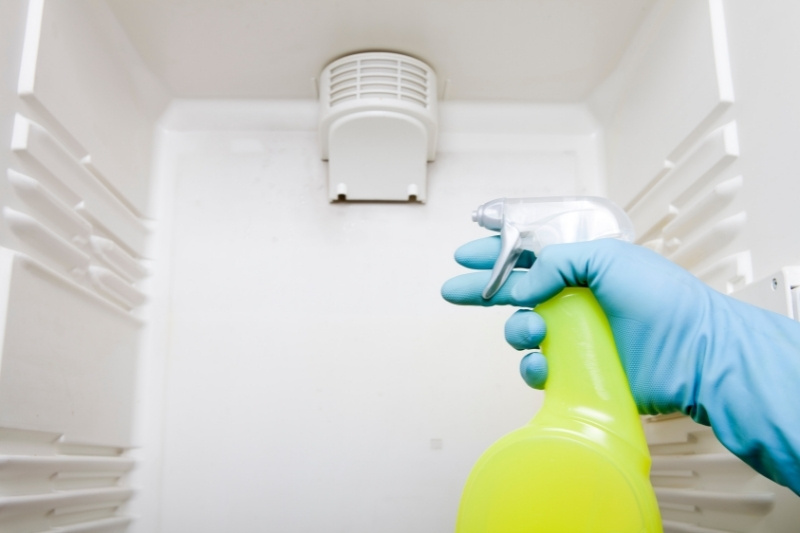
A spray bottle will come in handy if you want to clean your fridge with a sprayable mixture, like the vinegar method mentioned above.
All you need to do is add some vinegar and water to the bottle, shake it and start spraying the fridge with the mixture you’ve created.
A spray bottle helps to control how much product you use, so you don’t overuse cleaning items.
You can also target particularly dirty spots when you use a squirt bottle too, so your cleaning is more specific.
9. Cotton Buds
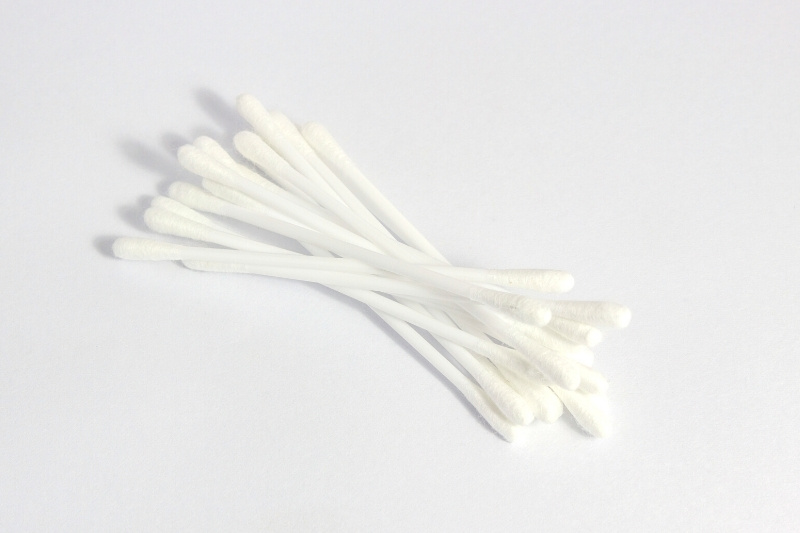
Cotton buds can be used to tease out dirt from hard-to-reach spots. For example, you can clean the top part of the drain hole with a cotton bud dipped in white vinegar.
The vinegar will be able to dislodge the grime in the hole and the cotton bud will be small enough to fit inside, a regular sized cloth, on the other hand, would be too cumbersome.
In general, cotton buds will only be used to clean small areas in a fridge, and a normal sized cloth will be used to clean the majority of surfaces.
10. Toothpicks
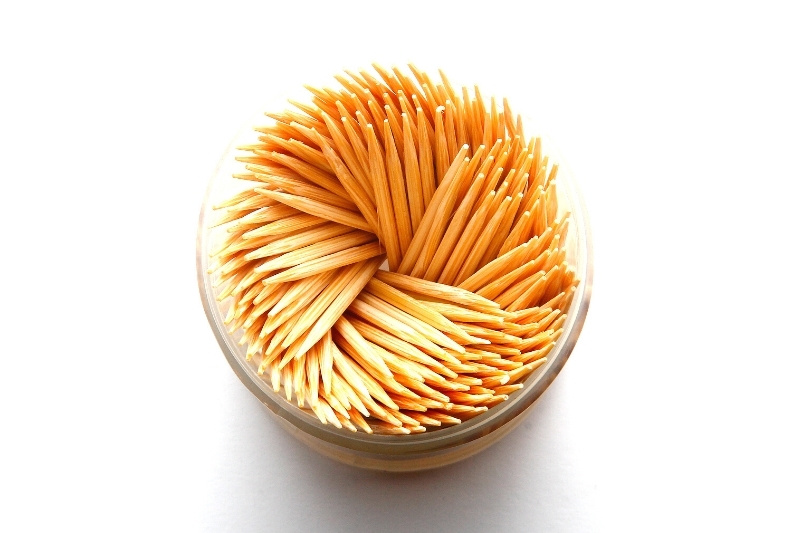
Similar to cotton buds, toothpicks can also be used to gently draw out dirt from hard-to-reach areas, like in the corners or on the shelf rests.
A toothpick will likely only be used for a specific job and, in fact, aside from drawing out hardened dirt, this tool shouldn’t be used to clean the whole fridge as it’s not a suitable cleaning device.
You also have to be careful not to push down too hard on the toothpick just in case you scratch the surface, but if you’re careful you should be able to dislodge dirt with ease.
11. Refrigerator Drain Hole Cleaning Kit
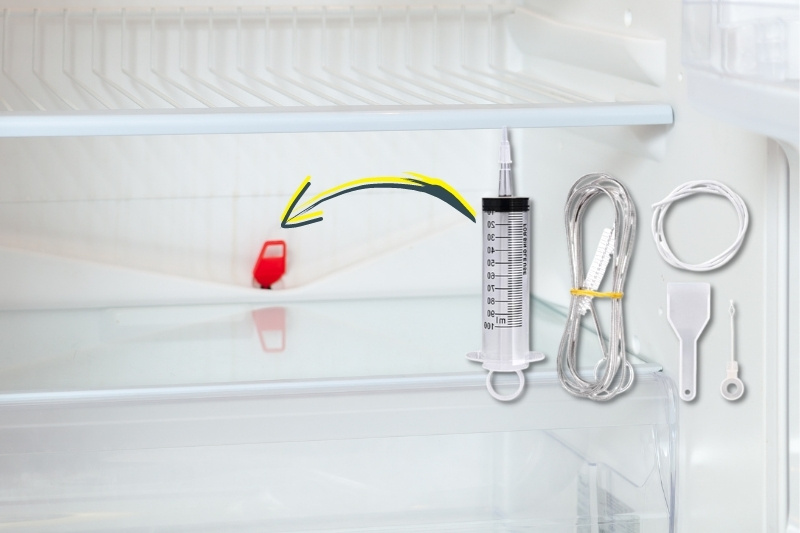
From time to time, you’ll have to clean out the drain hole at the back of the fridge, which can be a tad fiddly to do.
There are tools you can buy to make the job easier. For example, foris’s Refrigerator Drain Hole Cleaning Kit comes with the essential tools you need to clean the hole out.
The five-piece pack comes with a small brush that can be inserted into the hole and used to draw out dirt, a tube and syringe to pump water through the system, a little shovel to scrape up ice and a plug for the drain hole.
The drain hole’s purpose is to remove waste water from the fridge, like the water droplets you see on the back wall of the fridge.
If the drain hole is clogged, gunk and water will build up inside the fridge. This, in turn, may impact how the fridge functions, ice may start forming and the fridge will start to smell funny.
By using the cleaning kit above, or a similar alternative, the drain hole can be kept clean and clear, so the fridge should work properly and very little to no water will pool at the bottom of the fridge.
12. Toothbrush
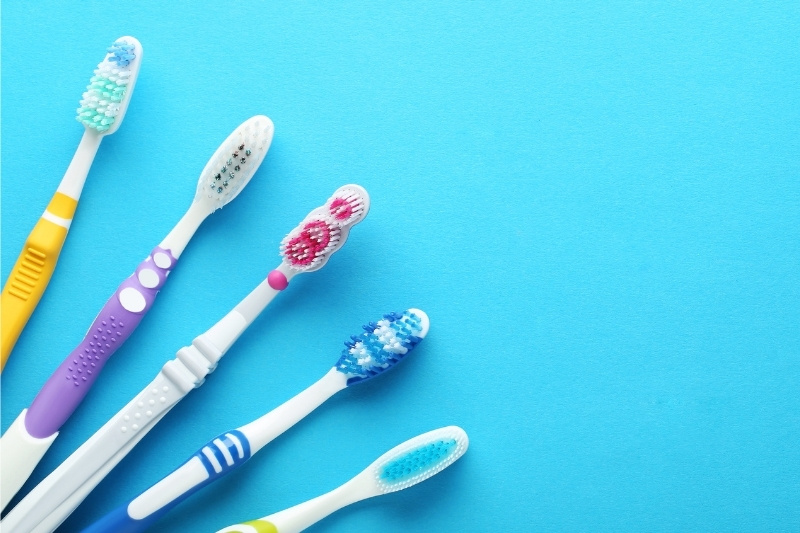
A soft toothbrush can be used to brush away any dirt that you see inside the fridge, including around the door’s seals. This tool is ideal for spot cleaning but it isn’t a good tool to use when cleaning large open surfaces, for this a cloth would be better.
You must not brush too hard as you could damage some of the parts too.
13. Specialised Cleaning Products
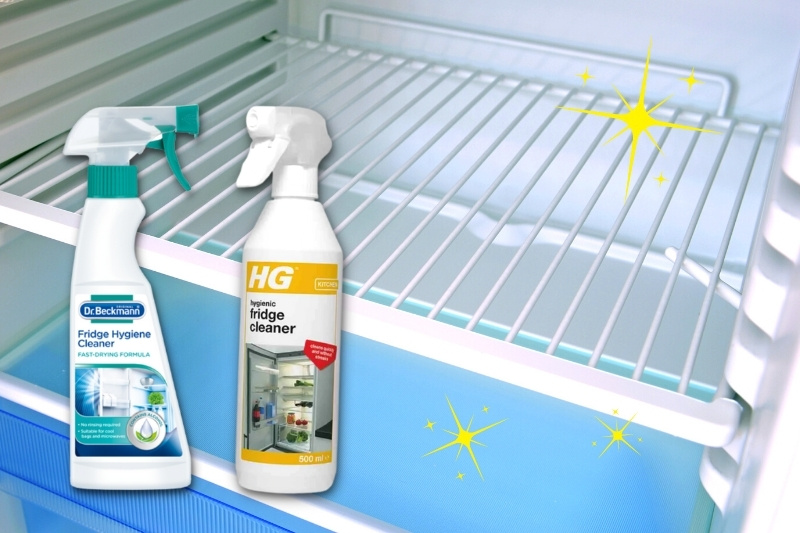
You can also buy specialised cleaning products, for example:
- HG Hygienic Fridge Cleaner – This particular cleaner can break down toughened dirt, can neutralise poor odours and dries very quickly.
- Dr Beckmann Fridge Hygiene Cleaner – This products leave fridges smelling fresh, can tear through dirt, and you don’t have to rinse the surfaces inside the fridge down after you’ve used it.

Bethan has a passion for exploring, reading, cooking and gardening! When she’s not creating culinary delights for her family, she’s concocting potions to keep her house clean!
